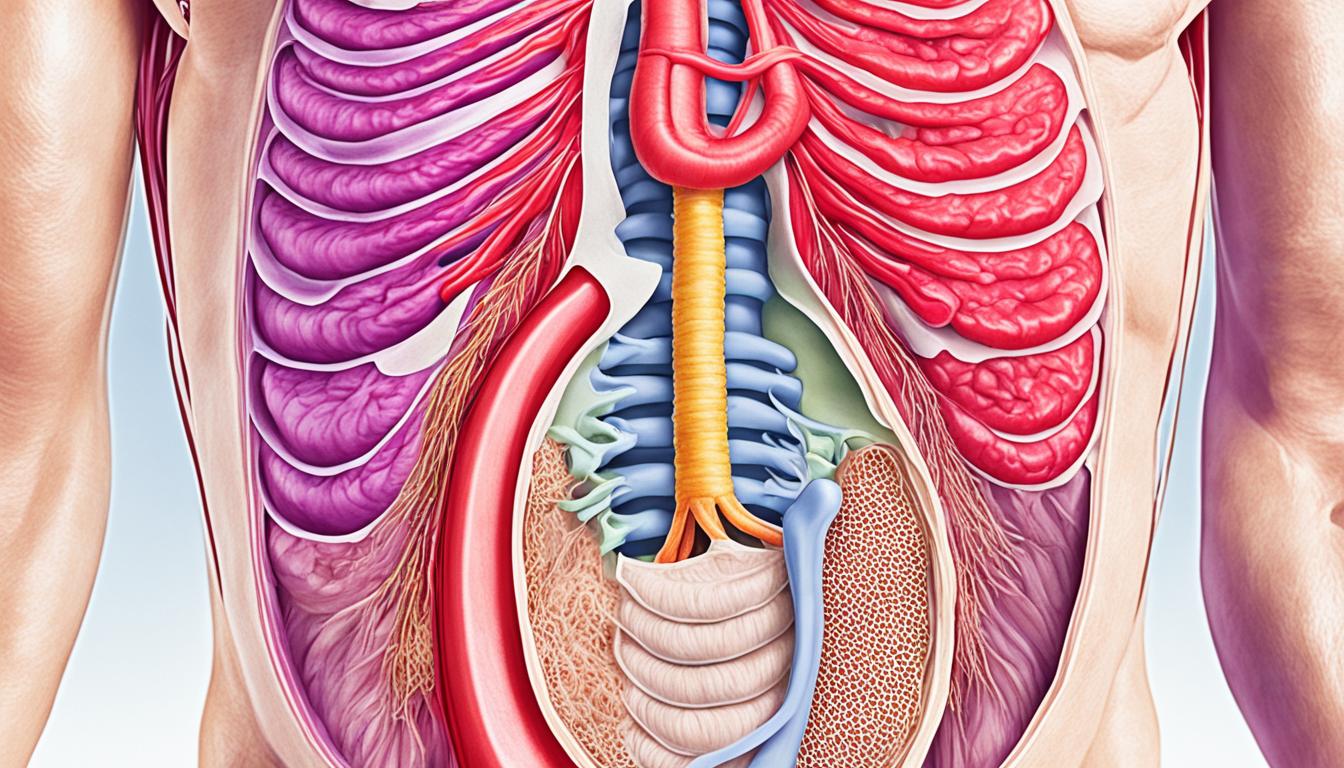Gastroesophageal reflux disease (GERD) is a common issue that affects the digestive system. It happens when stomach acid moves back up into your food pipe. This can cause pain and other problems. People with GERD may feel heartburn, have a sour taste, cough a lot, find it hard to swallow, and feel chest pain.
The main reason for GERD is a weak muscle. This muscle is like a ring. It should keep the bottom of the food pipe closed. But, when it doesn’t work right, stomach acid can go back up. Obesity, smoking, and medicines can also make GERD worse.
Doctors use special tests to find out if you have GERD. These tests can check how bad it is. Knowing this helps doctors decide how to treat it.
There are different ways to treat GERD. Changing your lifestyle is a good start. This means eating better, losing weight if needed, and steering clear of certain foods. Doctors may also give you medicines to help with the acid. If it’s really bad, you might need surgery to fix the muscle at the bottom of your food pipe.
New treatments, like using stem cells, are being looked into. Stem cells can become different kinds of cells. They might be able to help make the food pipe healthier and the muscle stronger. Scientists are studying if this can really work and be safe for people with GERD.
Key Takeaways:
- GERD happens when stomach acid moves back up into your food pipe.
- It can make you feel heartburn, taste something sour, cough a lot, find it hard to swallow, and have chest pain.
- A weak muscle at the bottom of the food pipe is the main cause of GERD.
- Doctors use special tests to check for GERD.
- It can be treated with lifestyle changes, medicines, or in some cases, surgery.
- Using stem cells might be a new way to treat GERD by making the food pipe and muscle stronger.
Pathophysiology of GERD
The functioning of the lower esophageal sphincter (LES) is key in GERD’s pathophysiology. It works with the crural diaphragm to create a high-pressure area. This area prevents stomach contents from flowing back up.
In people with GERD, the LES doesn’t shut properly. This lets stomach acid move upwards. A process called transient lower esophageal sphincter relaxation (TLESR) often causes this. TLESR happens when the LES suddenly loses pressure, not because of swallowing.
Problems with food moving through the esophagus also contribute to GERD. If the stomach doesn’t empty quickly enough, acid stays in the stomach longer. Mixing with pepsin and bile salts, this acid can harm the esophagus. It leads to esophageal mucosa damage, which can cause inflammation and other complications of GERD.
Stem Cell Therapy for GERD
Stem cell therapy is at the forefront for treating GERD. It utilizes regenerative medicine to potentially fix damaged parts of the esophagus. This method could create new opportunities for those dealing with GERD.
Stem cells are remarkable because they can turn into different cell types. This means they could help repair the esophagus lining and the lower esophageal sphincter (LES). The LES is vital in keeping stomach acid from going up the esophagus.
Early studies are promising. They show improvements in how the esophagus works and in GERD symptoms with stem cell therapy. But, we still need more research to be sure about its effectiveness and safety. This therapy stands as a unique option for treating GERD.

